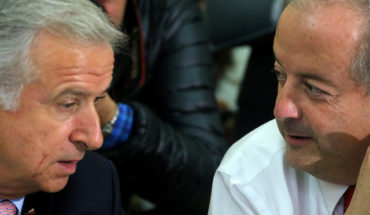Last International Women’s Day, the Government published in the Official Gazette the regulation of gender parity law in areas of political representation, in order to begin to take effect in elections to national legislative office I don’t think so. But the fight didn’t start in 2018. That there are women within political parties and political positions became an obligation in 1991 when through Law 24.012. Since that year, the State had to ensure that at least 30% of the lists of candidates presented by parties in elections should be women. The problem is that that 30%, instead of transforming into a flat, became a roof. For this reason, the feminist movement again demanded that instead of 30% parity be total and that the mandatory number be 50%, half of the population. But just as in 1991 the parties left out those who demanded and fought to make parity a reality, 2019 finds a very similar scenario. In a swampy terrain like national politics, feminists (responsible for this change) fear that they are off the charts. This June 22nd is the close of lists and you will see how many feminists are inside and how much of that quota was only settled by female female civil servants who, while women, are not necessarily feminists. An indispensable condition for thinking, creating and validating public policies that help combat gender-based violence and improve the quality of life of all women and dissents in the country.
Debate on list parity, Congress of the Nation Photo: Twitter
To understand a little more in panorama and the initiative of the hashtag #FeminsitasEnLasListas, Filo.News spoke with Natalia Del Cogliano, a political logist and member of the NGO Ojo Partidario, who performs together with many feminist journalists and the portal LATFEM, this campaign.” The hashtag arises from two central concerns that govern the work we have been doing since our organization. The first is that political groupings comply with the law of gender parity, nothing more and nothing less. All lists have to be made up of 50% women. We insist on this because the experience of a women’s quota showed that there are many reluctance from the parties to comply with this regulation”, explains Cogliano. On the other hand, both this NGO and many feminists who joined this initiative, what they propose, demand and hope, is that this assembling of lists will contain women who have a gender perspective. “Secondly, we must think of substantive representation, which is that, if the first condition is fulfilled, if the lists are made up of 50% women, that those women who access the national legislative branch, are committed to the rights of women women and all minorities,” she explains.” We are aware that what we are looking for is that more committed women enter from their female status. That they can add value and add content to have a fairer society. We want these women to be able to do legislative work that is on the road to developing close and positive legislation for all women,” the policymaker concludes.
Argentine feminism is the world’s vanguard. The fight for the #AbortoLegal infected the region. We are the country of #NiUnaMenos. The green handkerchief is a global symbol. The front that doesn’t wear #FeministasEnLasListas doesn’t turn its back on women. He’s turned his back on the story. — Noe Barral Grigera (@nbg__)
June 18, 2019
It’s not enough to have women on the lists, we need feminists who fight for #AbortoLegal, for equal pay, for care system. Poverty is sexist, we need gender perspective in public policy.#FeministasEnLasListas — Mercedes DAlessandro (@dalesmm)
June 18, 2019





